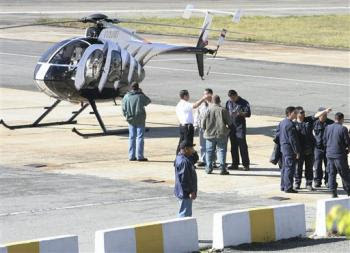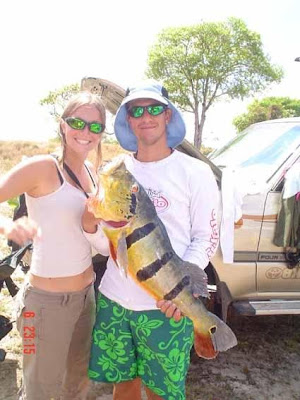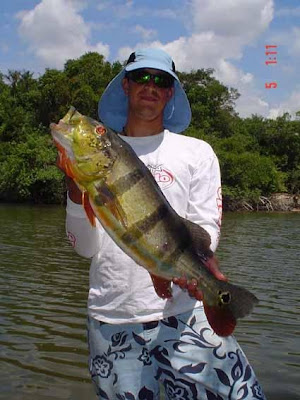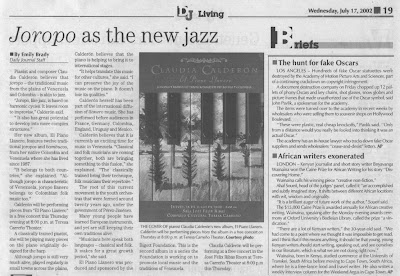Friday, February 29, 2008
Sunday, February 24, 2008
VENEZUELA LOS LLANOS~ Gerard Sioen / Volkmar Vareschi
 Venezuela Los Llanos
Venezuela Los LlanosGerard Sioen
Volkmar Vareschi
1982
Editiones Rene Moser 6 Rue Lincoln, 75008 Paris
Distribuidora Santiago C. A.
Fotos: Gerard Sioen
Textos: Original en Aleman Volkmar Vareschi
Traduccion al Espanole Ursula Vareschi de Nutt
ISBN-2-902906-09-9
Impreso en Espana
Format: 12 x 8.75 inches
Venezuela Los Llanos, is in many ways not unlike a later version of Dieter Brunnschweiler's; The Llanos Frontier of Colombia, with many more photographs and illustrations, published by the Latin American Studies Center of Michigan State University in 1972. Gerard Sione was the photographer for the book and provided beautiful pictures of birds and animals of the Llanos as well as stunning renditions of its landscapes. It is one of the few books ever produced containing photographs of the llanero cowboy in the land of the vaquero. Years after the production of Venezuela Los Llanos, Sione published some spectacular photographs of the working and herding of cattle by horse back in southern France which are another subject by may well be worth a search for your viewing. Volkmar Vareschi on the other hand was the academic for the elaboration of the book. The wrote the text for the book, about its climate, soils, geography, fauna and flora. Born in Germany, some say Austria, he lived most of his life in Venezuela as a naturalist studying matters of biology, zoology, ecology, botany and geology.
Breve reseña biográfica del autor

Volkmar Vareschi (1906- 1991)
Volkmar Vareschi nació 1906 en Innsbruck/Tirol. Finalizó sus estudios de Botánica, Ecología, Zoología, Geología (glaciología) y Edafología con el Dr. Phil. (Innsbruck) y el Dr. Habil. (Munich); varios años de asistente y docente en Zürich, Munich, Innsbruck. Desde 1950 trabajó más de 40 años en Venezuela, fundó el Departamento de Ecología, publicó más de 100 trabajos científicos – al lado de unos cuantos populares la mayoría sobre la vegetación de su segunda patria Venezuela: acerca de selvas, páramos, sabanas (quema), tepuyes, playa, contaminación (líquenes), 2 tomos de la Flora de Venezuela (helechos).
Gerard Sioen is still active and has a web site by the same name which is worth the search. Born in 1952, Gérard Sioen became photographer at the age of 18. For a long time he traveled around the world taking photographs and in the early 1980's teamed with Vareschi for the Venezuela Los Llnaos project.
A list of his work includes the following:
Journeys, reports1973-74 USA 1975-76 Alsace, Cathare region, Vercors 1977-78 Venezuela1979-90 Equator, Chile, Bolivia, Peru, Brazil, Paraguay, Venezuela, USA, Venice, Turkey, West Indies, the Basque country, Castles of
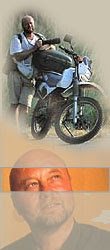 the Loire valley, Auvergne, Mexico, central America, Cyprus, Ireland, Andalusia, West America, Canada, Sicily, Greece, Australia, Poland, India, Reunion island, Morocco, Germany, Norway, Denmark, Scotland, Paraguay, Spain, the Netherlands, China, Tibet, Egypt Moscow, Stalingrad, Andorra, the USA, Israel, Portugal, Dordogne, Brittany.
the Loire valley, Auvergne, Mexico, central America, Cyprus, Ireland, Andalusia, West America, Canada, Sicily, Greece, Australia, Poland, India, Reunion island, Morocco, Germany, Norway, Denmark, Scotland, Paraguay, Spain, the Netherlands, China, Tibet, Egypt Moscow, Stalingrad, Andorra, the USA, Israel, Portugal, Dordogne, Brittany.Collaborators: Publishers - Documentary agenciesAlpha- Larousse- HermZ Publishers - Moser- Publishers Ð Sun Publishers Ð Figaro magazine- Anzenberger agency (Austria) Menges Publishers- Atlas Publishers Ð Equinoxe Publishers - Rapho agency.
Exhibitions1993 " The Cathare region " in Narbonne, then Carcassonne,1994 " Camargue " in the Saintes-Maries-de-la-Mer then in Aigues Mortes,1996 " Provence " in les Baux-de-Provence1998 preview of a permanent exhibition place, " the travellerÕs studio " where part of the authorÕs original photos are exhibited,1999 " Children of the world ".
Saturday, February 23, 2008
FLORA DEL LLANO~ NATRUALEZA DEL LA ORINOQUIA
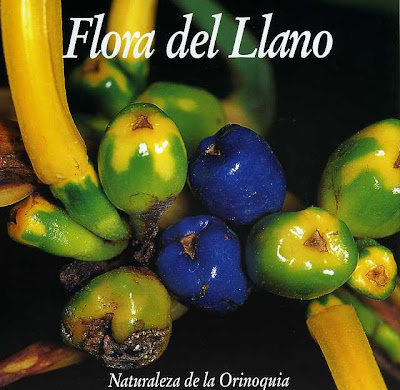
Flora del Llano
Cristina Uribe Hurtado
Cristina Uribe Editores Ltda
6.75 x 6.65 inces
111 paginas
Bogota 1997
Cristina Uribe Hurtado
fotógrafa, diseñadora gráfica
Bogotá, 1956
Diseñadora Gráfica egresada de la Universidad Jorge Tadeo Lozano de Bogotá;
Fotógrafa naturalista y arquitectónica,
Desde sus primeros trabajos se ha inclinado por los temas ambientales, ocupando la primacía en este campo una docena de excelentes libros ecológicos entre los cuales se destacan:
Anfibios y reptiles del Llano
Mamiferos del Llano
Flora del Llano
Insectos del Llanos
Mariposas del Llanos
Peces del Llano
Los Colores del aire, Aves de Colombia del Tropico Americano
En su empresa editorial, ha conformado un archivo fotográfico con énfasis en temas sobre la biodiversidad (fauna, flora, ecosistemas etc... que sobrepasa las 70.000 diapositivas seleccionadas.
En su tarea de fotógrafa, ha viajado extensamente por Colombia, las islas del Caribe, América Central, Africa y Europa en busca de tomas originales y de interés con que enriquecer su ya voluminoso archivo.
Tiene en preparación varios proyectos ecológicos y culturales, entre ellos un original libro sobre la evolución humana con fotografías de varios lugares antropológicos africanos.
CRISTINA URIBE HURTADO
Nació en Bogotá, Colombia, en 1956. Dudó entre dedicarse a la biología o a las artes, decidiéndose a estudiar diseño gráfico en la Universidad Jorge Tadeo Lozano de Bogotá. Después de varios años dedicada a la producción artística comercial, se consagró por completo a su propia editorial, que le permitió reunir su profesión a sus intereses. Desde 1991, dirige proyectos editoriales de altísima calidad gráfica y científica, asesorada por eminentes biólogos y botánicos colombianos, estadounidenses, holandeses y alemanes, que la han apoyado incondicionalmente, escribiendo muchos de los textos que acompañan sus trabajos ya editados. Su amor y admiración por la naturaleza, con sus espléndidas, y a veces un poco extrañas, formas de vida, nunca han dejado de sorprenderla, motivándola a especializarse en los temas ecológicos que plasma en las páginas de sus libros.
Para captar mejor los diferentes aspectos del motivo de sus investigaciones, se convirtió en fotógrafa naturalista, internándose en selvas, bosques, páramos y sabanas, para captar con su lente diversas especies animales y vegetales - ya sean flores, peces tropicales, mamíferos, insectos, reptiles o aves-, tomándolas in situ para imprimirles un carácter natural, actitud que quiere plasmar siempre en sus fotografías.
Es madre de dos hijas, que la acompañan con frecuencia en sus peregrinajes fotográficos. Su curiosidad y admiración por las formas y colores de las manifestaciones de vida del planeta, la han llevado a recorrer no sólo gran parte de Colombia, su país natal, sino el Africa oriental, Egipto, el Archipiélago de las Galápagos, las islas del Caribe, Cuba, Guatemala, Venezuela, el sur del continente -recorriendo la ruta que siguió Darwin a bordo del Beagle-, Chile, Argentina y el suroeste del Brasil, en busca de paisajes, de especies curiosas de flora y fauna y de tomas de interés general con que enriquecer su voluminoso archivo fotográfico, que sobrepasa ya las I 80.000 diapositivas seleccionadas, con énfasis en el tema de la biodiversidad.
Durante su permanencia en la firma Villegas Editores dirigió Arrecifes del Caribe, Manglares de Colombia ("Primer Premio Nacional de Ciencias y Tecnologías del Mar", otorgado por la Comisión Colombiana de Oceanografía y Colciencias, 1.990), y Selva Húmeda de Colombia; y bajo su sello editorial se han publicado Bosques de Niebla, Mamíferos del Llano (ganador de dos primeros premios y mención especial de calidad, en el VII Concurso Andigraf, "Lo Mejor del Año", 1.993), Anfibios y reptiles del Llano, Cecilia Porras - Su vida y su obra, Catena Mánoa - Todas las aguas, Insectos del Llano ((trofeo en su categoría y mención especial de calidad en el X Concurso Andigraf, "Lo Mejor del Año", 1.995 1996); Mariposas del Llano (premio de la Cámara Colombiana del Libro, concurso "Los Mejores Libros del Año", I 998, con mención especial en la categoría Libro Técnico y Científico - Ciencias Biológicas); Heliconias Llamaradas de la Selva Colombiana (mención especial de calidad, en la categoría "Textos de Estudio", en el XII Concurso Andigraf, "Lo Mejor del Año", 1.998-1999); Atlas de los descubrimientos y el Prodigio de la Evolución - del Simio Ancestral al Hombre Moderno, entre otros.
Estos trabajos se complementan ahora con el título Los Colores del Aire - Aves de Colombia y del Trópico Americano, con el cual espera complacer tanto a aquellos que se sienten atraídos por la diversidad y belleza de las aves, como a los que interesa el cuidado y la preservación de su entorno natural.
Translation
Plants of Llano Cristina Uribe Hurtado Cristina Uribe Publishers Ltd 6.75 x 6.65 inches 111 pages Bogota 1997 Cristina Uribe Hurtado Photographer, graphic designer Bogota, 1956 Graphic Designer graduate of the Universidad Jorge Tadeo Lozano in Bogota; Architectural photographer and naturalist, From her early work has been inclined toward environmental issues, occupy the leading position in this field of a dozen excellent books ecological including highlights: Amphibians and Reptiles of Llano, Mamiferos del Llano, Plants of Llano, Insects of the Plains, Butterflies of the Plains, Fish del Llano, The Colors of the air, and Birds of Colombia's Tropico American. In her publishing company, has formed a photographic archive with emphasis on issues concerning biodiversity (fauna, flora, etc. ... ecosystems that cover more than 70,000 slides selected. In her task of photographer, has traveled extensively in Colombia, the Caribbean islands, Central America, Africa and Europe in search of original shots and interest with which to enrich her already voluminous file. She has several projects under development and cultural, including an original book about human evolution with photographs of various locations anthropological Africans. CRISTINA URIBE HURTADO was born in Bogota, Colombia, in 1956. She debated between devoted life to biology or the arts, decided to study graphic design at the Universidad Jorge Tadeo Lozano in Bogota. After several years devoted to artistic production business, was devoted entirely to hier own publishing house, which enabled her to collect hier profession their interests. Since 1991, directs publishing projects of the highest quality graphics and scientific advice of eminent biologists and botanists Colombians, Americans, Dutch and Germans, who have supported unconditionally, writing many of the texts that accompany her work and edited. Her love and admiration for nature, with its splendid, and sometimes a little strange, lifestyles, have never stopped surprising her and the reasons to specialise in ecological themes reflected in the pages of her books. To better appreciate the different aspects of the reason for her research, she became a photographer naturalist, crossing into jungles, forests, moors and savannah, with his lens to capture various animal and plant species - whether flowers, tropical fish, mammals, insects, reptiles or birds, taking them on the spot for a character imprimirles natural attitude that always wants to translate her photographs. She is a mother of two daughters, who often accompany them on their photographic pilgrimages. Her curiosity and admiration for the shapes and colors of the manifestations of life on the planet, have led to travel not only much of Colombia, her native country, but East Africa, Egypt, the Galapagos Archipelago, the Caribbean islands , Cuba, Guatemala, Venezuela, South Africa-along the route followed by Darwin aboard the Beagle, Chile, Argentina and southwestern Brazil, in search of landscapes, curious species of flora and fauna and tap interest general that enrich her voluminous photographic archive, which exceeds 80,000 slides and I selected, with an emphasis on the theme of biodiversity. During her stay in signing Villegas Editores addressed the Caribbean Reef, Manglares de Colombia ( "First National Award for Science and Technology of the Sea", given by the Colombian Commission of Oceanography and Colciencias, 1,990), and Humid Forest of Colombia, and under her imprint have been published Forest Fog, Mammals of Llano (winner of two top prizes and special mention quality, in the seventh Andigraf Contest, "The Best of the Year", 1993), Amphibians and Reptiles of Llano, Cecilia Porras -- Her life and her work, Catena Mánoa - All waters, Insects of Llano ((trophy in its category and special mention of quality in the X Andigraf Contest, "The Best of the Year", 1,995 1996); Butterflies of Llano (prize Colombian Book Chamber, the "Best Books of the Year", I 998, with special mention in the category Book Technical and Scientific - Biological Sciences); Heliconias Llamaradas Colombiana de la Selva (special mention quality, in the category "Texts Study, "at the XII Andigraf Contest," The Best of the Year ", 1998-1999); Atlas of the discoveries and Prodigio of Evolution - the Ape Man Ancestral Modern, among others. These works are complemented now with the title The Air Colors - Birds of Colombia and American Tropics, which hopes to please both those who are attracted by the diversity and beauty of birds, and those interested in the care and the preservation of its natural environment.
46 KILLED IN VENEZUELAN PLANE CRASH
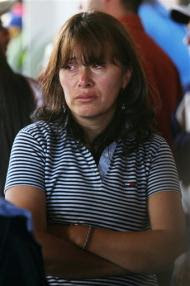
By SANDRA SIERRA
MERIDA, Venezuela (AP) — Investigators worked in freezing temperatures at a charred, high-mountain crash site to recover victims' remains and find clues Saturday in the crash of a plane that slammed into a mountain with 46 people aboard.
Sixteen specialists, including crash investigators and forensic experts, were dropped off by helicopter near the crash site on the steep, foggy slope at an altitude of 13,500 feet, said Gen. Ramon Vinas, head of the civil aviation authority.
The twin-engine Santa Barbara Airlines plane shattered on impact and burst into flames Thursday, leaving only its tail largely intact and a swath of blackened ground amid scrub brush. Searchers spotted the crash site by helicopter on Friday in the Sierra La
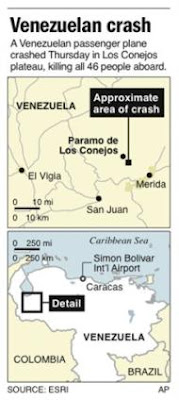 Culata National Park.
Culata National Park."We've run into many difficulties due to the steepness of the terrain," Vinas said. High winds forced the helicopter to leave the team more than a mile from the site, requiring them to hike in thin air and subfreezing temperatures to reach it.
Firefighters carried oxygen canisters to help cope with the high altitude.
Venezuelan officials said the recovery and identification of bodies would be difficult because victims were ripped apart upon impact.
"We're going to recover everything we can," emergency management chief Gen. Antonio Rivero told The Associated Press.
President Hugo Chavez on Friday declared that "Venezuela is in mourning" and called for a full investigation.
The French-made ATR 42-300, bound for Caracas, was carrying 43
 passengers and three crew members when it crashed shortly after takeoff from the Andean city of Merida, a tourist destination wedged between soaring mountain peaks.
passengers and three crew members when it crashed shortly after takeoff from the Andean city of Merida, a tourist destination wedged between soaring mountain peaks.Officials said the victims, mostly Venezuelans, also included five Colombians and a U.S. citizen, Vivian Guarch, 53, who worked for a Miami branch of Stanford Bank.
"There wasn't even bad weather and they tell me the pilot was among the pilots who know that route the best," Chavez said during a televised speech in Caracas. He said the pilot didn't report any problems to air traffic controllers.
The small airline Santa Barbara said the pilot had been flying for the carrier for eight years.
Aircraft manufacturer ATR, based in Toulouse, France, said specialists from the company and the French Accident Bureau were sent to assist in the investigation.Associated Press writer J
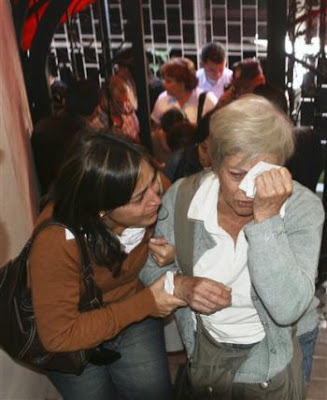 orge Rueda, in Caracas, contributed to this report.
orge Rueda, in Caracas, contributed to this report.THE ORINOCO RIVER BASIN ABOUNDS IN PAVONE
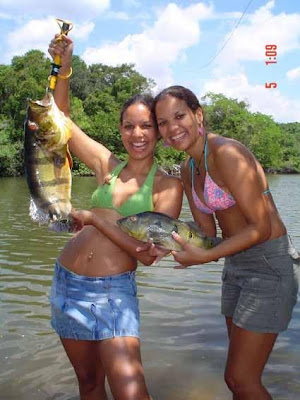
LOS PECES DE LOS LLANOS DE VENEZUELA
 Men have different passions. Benigno Roman's passion were the fish of the Orinoco River Basin
Men have different passions. Benigno Roman's passion were the fish of the Orinoco River BasinCichla temensis: Capturado en las lagunas de Aripa (5kg.)
Pavones! Palabras que se eschuchan y se pronuncian con agrado en Venezuela por corresponder este apelativo a peces de hermoso aspecto, de buen tamano, muy representativos de la fauna de nuestos pais y de gran importancia economica, deportiva y turistica. ~ El AutorPavones! A pleasant sound in Venezuela that matchs the name and beautiful appearance of a good size fish that is very representative of the fauna of our country and is of great economic importance to us through sport fishing, and tourism. ~ Benigno Roman
Colleccion: Los Peces de los Llanos De Venezuela I
First Edition 1981
143 Pages
11 x 8.25 inches
Edited by:
Fundacion Cientifica Fluvial De Los Llanos
ISBN: 84-499-8268-5
VENEZUELAN PLANE CRASH KILLS 46
Fri Feb 22, 2008 10:39pm GMT
By Enrique Andres Pretel
REUTERS
MERIDA, Venezuela (Reuters) - All 46 people on board died when a Venezuelan passenger plane slammed into the sheer face of a foggy Andean mountain after veering off course after takeoff, officials said on Friday.
Rescuers rappelled from helicopters to search for remains in the shattered wreckage lodged 13,000 feet (4,000 meters) above sea level on a craggy, rock wall known as "Indian Face."
The blue-and-white tail of the twin-engine plane rested on the mountainside, which was charred by flames. Pieces of white fuselage and other remains from the crash littered the area, images from a video shot by searchers showed.
Whipped by cross-winds, rescue mountain-climbers struggled to lower themselves down the cliff to reach the plane operated by the small local airline Santa Barbara, civil defence chief Antonio Rivero said.
"This plane was found completely wrecked, smashed against the face of one of the mountains," Rivero said. "Unfortunately everyone aboard died."
With few clearings to land choppers, searchers set up camp almost a mile (a kilometre) away and trekked across the rugged terrain to the wreckage. The plane crashed 6 miles (10 km) from the tourist city of Merida after taking off for the capital Caracas on Thursday before dusk in a notoriously difficult region to navigate.
"It makes your heart ache. Venezuela is in mourning," President Hugo Chavez said in a televised speech. He pledged a thorough investigation into what caused the crash. The mountainous region is known for their condors and adventure trails.
For years, Venezuelans have debated whether the Merida airport should be shut because it is hemmed in among mountains, although its accident record is not especially noteworthy.
The weather had been good, and the roughly 20-year-old plane had a solid maintenance record and no history of technical problems, authorities said. The pilot was experienced and had specialized training for flying through the Andes. The pilot made no distress calls before crashing with 43 passengers and a crew of three aboard.
A well-known Venezuelan political analyst, a local mayor and his 11-year-old son and an American woman working at the Venezuelan arm of financial services company Stanford Financial Group were among those killed, authorities said.
Olivia Gil, who was related to a woman on board, fought back tears behind wide sunglasses but kept up hope for a miracle.
"They have given us the news that there's nothing there, that there are no survivors but now rescuers are going in to look," she said. "We just don't know."
Freddy Belisario, an insurance company worker, considered himself a survivor. He had been scheduled to take the flight but moved up his trip by a few hours "on an impulse."
"It's a day when I was not on the list (to die). My time was not due," he told Reuters, adding he would not be flying for a while because "I don't want to push my luck."
Pilots need special training to fly from Merida and aircraft are banned from flying there at night. The plane that crashed on Thursday was the day's last flight out.
Santa Barbara is a small airline that covers domestic routes and has seven Merida flights a day. The plane was an ATR 42-300, a turboprop built by ATR, a French-Italian joint venture between EADS and Finmeccanica. French investigators and an ATR team were going to Venezuela to help in the probe of the crash. Thursday's was the second major air accident in Venezuela this year. Last month, 14 people, including eight Italians and one Swiss passenger, died when a plane crashed into the Caribbean close to a group of Venezuelan islands.
EL JOROPO~ CLAUDIA CALDERON

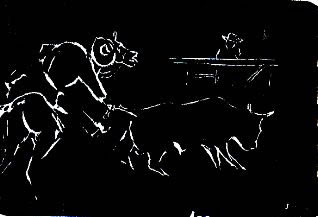
El Joropo es una expresión de arte popular en permanente evolución, se trata originalmente de una fiesta campesina o pueblerina que integra poesía, canto, música y danza en un sistema de creatividad improvisatoria sobre estructuras establecidas y parámetros definidos de estilo.Sus orígenes se remontan a las músicas ibéricas del Siglo XVII y XVIII, tales como el múltiple Fandango, las Folías, Peteneras, Jotas y Malagueñas andaluzas, sazonadas con la influencia de ocho siglos de dominación árabe y posteriormente transformadas en América con el mestizaje de elementos africanos e indígenas, bajo el sol abrasador de la Cuenca del Orinoco y la vastedad infinita de sus horizontes y llanuras.Los antecesores del Joropo incluyen la música de marineros y trovadores que llega en los galeones provenientes de España, transformándose en música arraigada en el suelo americano y dando lugar a una tradición vital y poderosa que se expresa en un alto desarrollo musical y poético convirtiéndose en emblema de la identidad nacional.El Joropo es una tradición que abarca casi la totalidad del territorio venezolano y al menos la cuarta parte del territorio colombiano. En Venezuela el Joropo es considerado el baile nacional por excelencia y existen tres tipos de Joropo clasificados por regiones con importantes variantes de instrumentación y estilo: el Joropo Oriental, el Joropo Central y el Joropo Llanero. Solamente el Joropo Llanero, extendido alrededor de la cuenca central del Orinoco, es común a Colombia y Venezuela, siendo el más difundido de todos, tanto por la amplia discografía y radiodifusión como por la abundancia de festivales, concursos y torneos que involucran a ambos países. Además es notable el auge y desarrollo urbano que ha tenido esta música en los últimos años en las respectivas capitales.
La instrumentación tradicional del Joropo Llanero es el clásico trío de arpa ó bandola (considerados como “instrumentos mayores”), cuatro y maracas, además de la reciente incorporación del bajo eléctrico. Ya sea en el registro instrumental como en el vocal, observamos una creatividad permanente de los músicos. Los copleros improvisan versos rimados sobre modelos melódicos preexistentes, contando sucesos históricos ó costumbristas, o refiriéndose a eventos y personas de la fiesta; los instrumentistas aportan variantes significativas a los patrones establecidos, inventando nuevos gestos expresivos en una incesante búsqueda de sonoridades que trasciendan las fronteras de lo conocido tradicionalmente. Se destaca una manera de cantar denominada "canto recio" que sobresale por su estilo fuertemente declamatorio y su carácter épico, como de grito al aire libre. También es notable el canto alterno o duelo improvisado entre dos copleros, llamado "contrapunteo".
El Joropo se caracteriza por un sistema de estructuras cristalizadas a lo largo de la historia a partir de canciones y danzas tradicionales que se erigieron en formas musicales, sirviendo como base para a variantes en la letra, o convirtiéndose en formas puramente instrumentales. Los principales géneros se denominan Golpes (danzas rápidas) y Pasajes o Tonadas (canciones lentas).Entre ellos figuran el Zumba que zumba, la Chipola, el Gabán, el Gavilán, el Pajarillo, el Seis por Derecho, los Merecures, el Seis Numerao, la Catira, la Guacharaca, la Periquera, el Nuevo Callao, el Carnaval, el San Rafael, el Quitapesares, entre otros y sus diversas combinaciones.
El Joropo constituye un gran arte de la improvisación y de la variación instrumental y vocal y se encuentra en un momento de trascendencia histórica al incorporar a su lenguaje, elementos e instrumentos de otras culturas musicales."Sabana de Sol Quemao......me huele a tierra mojadame huele a llanto en el cielome huele a lluvia encantada..."
EL ALMA LLANERA DE CLAUDIA CALDERON
 El alma llanera de Claudia Calderón
El alma llanera de Claudia CalderónLa pianista colombiana cambia la clásica arpa para darle al joropo venezolano un ritmo de jazz
Juan Rodríguez Flores Sabado, 20 de enero de 2007
Luego de realizar estudios de piano en Cali, Colombia, su ciudad natal, Claudia Calderón tomó la decisión de continuar especializándose en Bogotá. Posteriormente, movida por el impulso de seguir ceciendo y evolucionando a nivel artístico, se inscribió en el prestigioso Instituto Musikhochshule de Hanover,
Alemania, del cual salió graduada con todo tipo de honores. Admiradora de la música tradicional latinoamericana, especialmente de aquélla que se produce en las llanuras, las montañas y las costas de Venezuela y Colombia, Claudia Calderón ha creado un original y vibrante concepto musical en la que no caben en las estrechas y limitadas definiciones académicas. "Se trata de un proyecto que ha tenido resonancias muy fuertes en dondequiera que ha sido escuchado, porque al ser interpretada por el piano la música llanera adquiere una nueva dimensión que la saca del concepto folklórico en el que ha sido ubicada tradicionalmente", comentó ella en reciente entrevista telefónica.
"Para mí era muy importante demostrar que hay una historia compartida entre el
bambuco y el pasillo colombiano y el joropo y el vals venezolano. Eso quiere decir que se trata de expresiones musicales que tienen un origen común y no pertenecen a familias diferentes, como se estuvo pensando durante mucho tiempo".
Hoy sábado en el Museo de Arte Latinoamericano de Long Beach (MOLA), dentro de la serie Chamber Music in Historic Sites, producida por Da Camera Society of Mount St. Mary.s College, Claudia Calderón ofrecerá un concierto acompañada por Rafael Brito (tiple), Luis Pino (cuatro), Roberto Koch (contrabajo) y José Alberto Pérez (maracas).
En esta primera y única y presentación que ofrecerá en el sur de California, el público tendrá la oportunidad de apreciar la vitalidad y entusiasmo con los que ella asumió la tarea de transformar, en un concepto nuevo y refrescante, algunos de los ritmos que han sido cultivados por los pueblos de la región andina que hay en América Latina durante varios siglos.
"Lo primero que hice, antes de asumir la responsabilidad de grabar El piano llanero, fue organizar una larga y detallada investigación que me permitió recopilar algunas de las mejores melodías que se conocen en la zona que hay entre Colombia y Venezuela y que se han vuelto, por eso mismo, representativas de nuestra cultura musical", aseguró Calderón. "Después llevé a cabo una cuidadosa transcripción de cada una de ellas que fue publicada en forma de libro. Eso me dio la confianza que necesitaba tener para poder interpretarlas en piano sin traicionar, en ningún momento, el espíritu que tuvieron originalmente".
Aunque no fue una tarea fácil Claudia Calderón considera que, después de estudiar y trabajar en el proyecto durante 15 años, terminó finalmente por alcanzar sus objetivos. El resultado de éstos, como hoy bien puede apreciarse, es el flamante CD en el que consiguió dejar plasmadas por primera vez todas las ideas que tenía para darle a la música llanera un sentido moderno y universal. Un segundo CD dentro de la misma serie de El piano llanero ayudó a consolidar,
definitivamente, dichas intenciones.
"El piano me permitió tener un mayor acercamiento con el joropo, porque es un ritmo alegre y energético que al ser trasladado del arpa al piano se vuelve muy parecido al jazz contemporáneo", señaló Claudia Calderón. "Pienso que el joropo es, para Venezuela y Colombia, lo mismo que el tango en Argentina, la samba en Brasil y la salsa en el ámbito caribeño. Por eso resulta muy familiar a los oídos de quienes llegan a escucharlo".
"Me gusta interpretar el joropo porque es un tipo de música que considero apasionante. Y su ritmo, que es tan contagioso, me recuerda el galope de los caballos que corren libres por las montañas y las planicies de los Andes", dijo la artista nacida en Palmira, Valle del Cauca, Colombia y residente en Venezuela desde 1987. "El joropo está saliendo del antiguo .nicho. en que se mantuvo confinado durante mucho tiempo. Ahora, con la incorporación de otros instrumentos de origen europeo, tales como el piano y el contrabajo, está alcanzando una nueva dimensión fuera y dentro de nuestro continente".
Emocionada frente a la oportunidad que tendrá de presentar su música en el Museo de Arte Latinoamericano de Long Beach, Claudia Calderón explicó que su concierto estará basado, exclusivamente, en la ejecución que hará del piano como si fuera una arpa llanera.
"Para mí no existe ninguna diferencia entre el piano y el arpa al momento de tocarlos, por eso digo que son estilos totalmente compatibles. La música que voy a interpretar, si bien es cierto que pertenece a Venezuela y Colombia, al mismo tiempo forma parte del patrimonio cultural de todos los pueblos que hay en América Latina. Yo espero que la gente que asista al concierto sienta el mismo orgullo que nosotros, mis músicos y yo, sentimos al tocarla".
Nota de La Opinion
http://www.laopinion.com/archivo/print.html?START=1&RESULTST...
CLAUDIA CALDERON
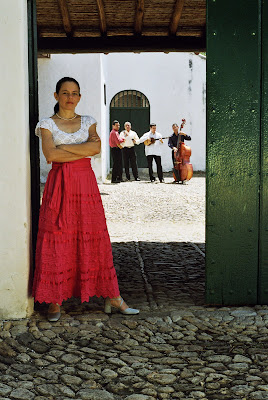
Colombian pianist and composer Claudia Calderón was born in Palmira, Colombia. Based on traditional harp music, Claudia Calderon’s folkloric piano music preserves and promotes the ethnic music of the mountains, plains and coasts of Venezuela and Colombia.
Friday, February 22, 2008
VENEZUELAN PLANE CRASHES, 46 Killed
Enrique Andres Pretel
Reuters
Friday, February 22, 2008
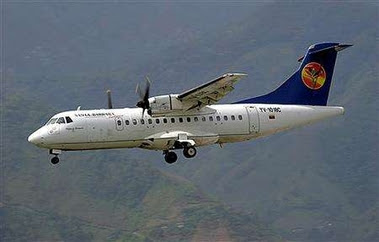 A Santa Barbara airlines aircraft ATR42-300 similar to the one declared missing is seen in this undated handout photo. A Venezuelan commercial plane carrying up to 46 people went missing on Thursday soon after taking off from an Andean mountain city just before dusk, authorities said. REUTERS/Handout
A Santa Barbara airlines aircraft ATR42-300 similar to the one declared missing is seen in this undated handout photo. A Venezuelan commercial plane carrying up to 46 people went missing on Thursday soon after taking off from an Andean mountain city just before dusk, authorities said. REUTERS/HandoutBARINAS, Venezuela (Reuters) - A Venezuelan passenger plane slammed into a steep Andean mountainside shortly after takeoff from a nearby tourist city and all 46 people on board were killed, rescue officials said on Friday.
Search teams spotted the wreckage from a helicopter flying over high-altitude mountains. Helicopter pilot Jhonny Paz said the plan was "pulverized" and there were no survivors.
"There is minimal chance of any survivors," said Gerardo Rojas, a regional civil defense chief. "The plane is just too destroyed and it is in such a tough area."
The twin-engine plane crashed just a few miles (kilometers) from the mountain tourist city of Merida, notoriously difficult for pilots to navigate around, after taking off for the capital Caracas on Thursday evening.
Recovery of the bodies and wreckage would be difficult because there were no obvious areas for aircraft to land nearby in the rugged terrain.
"The zone is completely inaccessible," said Ivan Altuve, a search team coordinator working from the city of Barinas in western Venezuela.
Search teams had trekked overnight through rugged terrain and at daylight on Friday aircraft scoured the Andes.
There was no evidence the pilot made distress calls to air traffic controllers before it crashed about 13,000 feet (4,000 meters) above sea level, officials said.
Mountain villagers reported hearing a huge noise they thought could be a crash soon after the disappearance of flight 518, local civil defense official Gerardo Rojas said.
The passenger list included a well-known Venezuelan political analyst and relatives of a senior government official. There were no immediate reports of foreigners aboard the plane operated by local airline Santa Barbara.
TOUGH FLIGHT CONDITIONS
Pilots need special training to fly from Merida's airport because the city is so tightly hemmed in by mountains that planes must make steep ascents at takeoff.
Visibility at dusk becomes so difficult planes are only allowed to take off during daylight. The plane involved in Thursday's incident was the day's last flight out.
Still, weather conditions and visibility were described as optimum at the time of takeoff by one air rescue official.
Family members who had waited for the passengers to arrive in Caracas received help from psychologists to deal with anxiety. They were set to fly on Friday to the area of the crash.
Santa Barbara is a small Venezuelan airline that covers domestic routes and has seven Merida flights a day.
Its president, Jorge Alvarez, said the roughly 20-year-old plane was well-maintained and had no record of technical problems, and that the pilot had worked with the airline for eight years.
The plane was an ATR 42-300, a turboprop aircraft built by French-Italian company ATR.
The ATR 42 series has been involved in at least 17 accidents since first flying in 1984, according to the Aviation Safety Network, a private air safety monitoring agency.
Thursday's was the second major air accident in Venezuela this year after a plane carrying 14 people, including eight Italians and one Swiss passenger, crashed into the sea close to a group of Venezuelan islands in January.
(Additional reporting by Brian Ellsworth, Ana Isabel Martinez and Enrique Andres Pretel; Writing by Saul Hudson; Editing by Kieran Murray)
Brìgido Ríos. Baile de las Mujeres en Cúa
About This Video
Baile popular en homenaje a las mujeres joroperas del folklore nacional. Se lleva a cabo en diferentes fechas en las ciudades de Cúa, Guarenas y Guatire del estado Miranda, Venezuela. Tradicionalmente, a la medianoche, es dedicada una pieza para el baile exclusivo de las mujeres en pareja. Grabado por Juan Aquino. Club El Picapica de Cúa.
Gaby Duarte y Alvaro Ramos en Paracotos
About This Video
Gaby Duarte "La Faraona del canto tuyero" , con... (more)
Added: September 27, 2007
Gaby Duarte "La Faraona del canto tuyero" , considerada entre las mejores voces recias del canto mirandino. Esta vez acompañada en el arpa por Alvaro Ramos en el Paracotazo tuyero. Grabación efectuada en la población de Paracotos, estado Miranda, Venezuela.
Thursday, February 21, 2008
Plane Missing in Venezuela
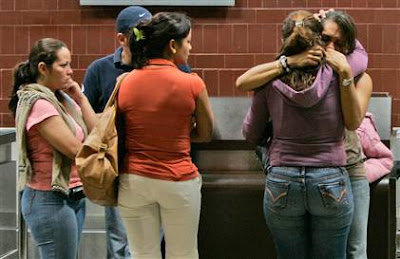
Plane missing in Venezuela, 46 on board
Rescuers dispatched after contact with commercial airplane lost
CARACAS, Venezuela - A commercial airliner with 46 people on board was reported missing Thursday over western Venezuela, officials said.
Rescuers rushed to a mountainous region of Merida state as authorities struggled to confirm reports that the aircraft had been located.
The twin-engine plane owned by Venezuelan airline Santa Barbara failed to contact control towers as expected after it took off from Merida en route to Simon Bolivar International Airport outside of Caracas, said Gen. Antonio Rivero, Venezuela's emergency management director.
Rivero said authorities in Merida state were checking "information regarding the possible discovery of the plane" in a mountainous region of Merida, which borders neighboring Colombia. But he said in an interview on state television that officials have no information on what condition the plane could be in. He did not elaborate.
The French-made ATR 42-300 carrying 43 passengers and three crew members took off from Merida's airport about 5 p.m. and was declared missing 30 minutes later, officials said. The duration of the flight was to have been an hour and 45 minutes.
Noel Marquez, director of Venezuela's emergency management agency in Merida, said rescue teams were on their way to the mountains, some more than 16,000 feet above sea level.
"We are going to wait for the teams to reach the area to confirm if the plane is effectively in the zone and in what conditions it was found," Marquez said.
The area where it disappeared lies about 400 miles southwest of Caracas.
Santa Barbara is a small Venezuelan airline that covers domestic routes.
This developing story will be updated.
Baile de Joropo Biruaca de Oro 2005
Alejandro Ciojedas
Nojoda que orgullo papa, vivan las ocho estrellas y el escudo nacional, Venezuela no tiene Padrote carajo, pa' lante mi llano Apure nunca te quedas.
Jorpacas
Wow!Impresionante, voy escuchando joropos ya hace un buen tiempo, pero no sabía que los bailan tan lindo!Felicidades Venezuela!
Josecisnes
Pues asi es.. EL jorpo tambien es de Colombia amigo.., jejeje saludos.. bye!
Wednesday, February 20, 2008
LLANERO FROM WIKIPEDIA
From Wikipedia, the free encyclopedia
A Llanero or the Llaneros is the name given to Venezuelan and Colombian cowboys and means "plainsmen." The Llanero take their name from the Llanos grasslands occupying western Venezuela and eastern Colombia. The Llanero were originally part Spanish and Indian and have a strong culture including a distinctive form of music.
Llaneros defended King Ferdinand VII until 1814 when Ferdinand returned to his throne in Spain. In 1819, an army of Llaneros, led by Simón Bolívar and José Antonio Páez, defeated the Spanish with a surprise attack when they crossed over the Orinoco plains and the Andes mountains.
History
Prior to Spanish settlement in 1548,the Llanos was occupied by indigenous groups. Andalucian monks established settlements close to Indian villages and accomplished conversion through a mixture of persuasion and force.
The Spaniards started to graze cattle on the grasslands of the llanos and the Llanero were originally a mixture of Spaniards and Indians. Indeed, Llaneros still use many terms dating from the 16th and 17th centuries. From 1640 to 1790, outlaw slaves lived in cumbes, or outlaw slave communities, and intermarried with the Llanero.
By the end of the 18th century, the region exported 30,000 mules a year to the Antilles and salted meat for the 1.5 million slaves there and in Cuba. There were 1.2 million cattle in the area by 1815.
When the Wars of Liberation started, the Spanish enlisted the Llaneros, playing on their dislike of the criollos of the independence movement. Bolívar realized that the plains were critical to success in the wars of liberation – they offered freedom of movement, as well as the capacity to feed his army.
He therefore sought to enlist the Llaneros to his cause and gradually succeeded by enduring the same hardships as they did – the Llaneros called him culo de hierro – or "iron buttocks" – for his endurance on horseback.
The Llaneros led by Páez proved crucial in Bolivar's campaign. After leading his forces including the Llanero troops over the eastern Andes, Bolívar won a critical victory at the Battle of Boyacá on August 7, 1819. Three days later, he captured Bogotá in what was the turning point of wars of liberation.
The Llaneros would also prove to be vital in future battles in the campaign. Paèz's Bravos de Apure or lancers were again critical in the Battle of Carabobo on June 24, 1821, and allowed Bolivar to capture Caracas. Paéz would become the first President of Venezuela.
During the 1850's, a hide boom stimulated the local economy. A boom in Great Egret feathers in the early 1930's in Europe led to them being called white gold until the trade was banned.
Llanero culture
Cattle form an important part of Llanero culture. There are 12 million cattle on the llano. During the year, the Llaneros have to drive cattle great distances. During the winter wet season, the Llaneros have to drive the cattle to higher ground as the poor drainage of the plains means that the annual floods are extensive. Conversely, they have to drive the cattle towards wet areas during the dry summer.
The Llaneros show their skills in coleo competitions, similar to rodeos, where they compete to drag cattle to the ground.
Llanero music is distinctive for its use of the harp, the maracas and a small guitar called a cuatro. The joropo, a Llanero dance, has become the national dance of Venezuela, and of the LLanos of Colombia. While Llanero music is relatively unknown outside of Venezuela and Colombia, the musical group Los Llaneros have toured throughout the world.
Llanero cuisine is based on meat, fish, chicken, rice, arepas, and other starches, although wheat is not used. Llanero Ken, a doll dressed in the distinctive Llanero costume, including a customary starched hat, has become a popular doll in Venezuela.
North American usage
The Spanish also used the term to describe the nomadic tribes of the Llano Estacado of Texas and New Mexico and was applied to the Apache in particular.
In Spanish, The Lone Ranger is known as el Llanero Solitario.
See also
Vaquero
Cowboy (U.S.A)
Gaucho (central Argentina cowboy)
Morochuco (Peruvian Andean cowboy)
Piajeno (north coast mule rider of Peru: Piura and Lambayeque)
Charro (Mexican cowboy, nomad and bandolero)
Guajiro (Cuban cowboy)
Huaso (Chilean cowboy)
jibaro (Puerto Rican cowboy)
Further reading
Richard Slatta, Cowboys of the Americas, Yale University Press, New Haven, 1990
Donald Mabry, Colonial Latin America, Llumina Press, 2002
Further reference
About.com article on the Llaneros
Donald Mabry article on Military Aspects of Venezuelan independence
Last Frontiers article on the Llanos University of Texas Handbook of Texas Online
Tuesday, February 19, 2008
FOR INSIGHT INTO THE LLANOS COWBOY"S NORTHERN BROTHEREN READ WITTLIFF"S VAQUERO
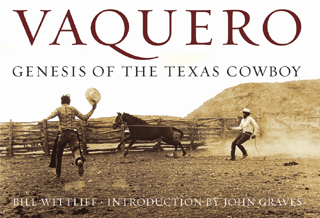
Vaquero: Genesis of the Texas Cowboy
By Bill Wittliff
Introduction by John Graves
"It would almost certainly be impossible to find such a group of traditional vaqueros [now] . . . doing their beautiful, strenuous work with horses and cattle in the old, old ways. But at least they can be found here, in Billy's lovely and meaningful photographs. We are most fortunate to have them." —John Graves, from the Introduction
In the early 1970s, noted Texas historian Joe Frantz offered Bill Wittliff a once-in-a-lifetime opportunity—to visit a ranch in northern Mexico where the vaqueros still worked cattle in the traditional ways. Drawn to this land-out-of-time again and again, Wittliff photographed the vaqueros as they went about daily chores that had changed little since the first Mexican cowherders learned to work cattle from a horse's back. In the tradition of the great cowboy photographer Erwin Smith, Wittliff captured a way of life that now exists only in memory and in the pages of this book. Here you'll find photographs that reveal the muscle, sweat, and drama that went into roping a calf in thick brush or breaking a wild horse to the saddle. Wittliff's evocative text recalls the humility and pride of men who knew their place in the world and filled it with quiet competence. John Graves brings his own memories of the vaqueros to the text, writing about the kinship between the vaquero and the cowboy and about how "the old, old ways," which Wittliff preserves in these "lovely and meaningful photographs," still tug at the modern imagination.
Bill Wittliff, of Austin, Texas, is a distinguished photographer and writer whose photographs have been exhibited in the United States and abroad. Cofounder, with his wife, Sally, of the highly regarded Encino Press, he is also a past president and Fellow of the Texas Institute of Letters and a recent recipient of the Texas Book Festival Bookend Award. As a screen writer and producer, his credits include The Perfect Storm, The Black Stallion, Legends of the Fall, Lonesome Dove, and others.
Table of Contents
Acknowledgments
Introduction by John Graves
El Campo
La Remuda
La Junta de Las Vacas
La Caballada
La Casa
Los Brutos
Afterword
El Campo
The hub of the vaquero's life in the chaparral is his campo. It is here that he takes his meals from battered tin plates; here that he makes his bed. It is here that he catches his horses from the remuda to begin his day's work; here, too, that he will stand or sit before the campfire as the world grows dark to smoke and sing and talk of good and bad horses with compadres who know, as he knows, what this life is like. Whatever its site, el campo is the place as close to a home as the vaquero is likely to find in the chaparral.
The morale of el campo is dependent on el cocinero del campo—the cook. Traditionally as salty as the tasajo—jerky—he hangs out to dry in the sun, the cocinero must be both versatile and durable, for his duties include everything from preparing three hot meals each day in as many different campsites, each often miles apart, to repairing wagons and men.
El campo moves almost daily, following the cow work, by means of el carro del campo—the chuckwagon. This movable commissary carries the vaqueros' bedrolls, food, water, and extra gear, as well as the cocinero's tools and cooking utensils. The chuckwagon is not a Mexican invention; rather, it evolved during the early days of the big Texas roundups. Charles Goodnight was credited with giving the chuckwagon its greatest refinement: the chuckbox. Within a short time after Goodnight introduced it, this durable cupboard with its drop-down worktable became standard equipment on the grub wagons of all the big cow outfits, from Montana to Mexico. In matters pertaining to cow work, inventions have moved south as well as north across the Río Bravo, with little regard to national origin.
Monday, February 18, 2008
Claudia Calderon El Piano Llanero
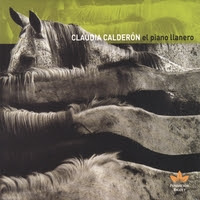
Claudia Calderon
El Piano Llanero
Tracks
1 Quirpa
2 Quitapesares Con San Rafael
3 Gabán, Chipola Y Pajarillo
4 Las Espigas
5 Amalia
6 El Trapiche
7 Revuelta Tuyera
8 El Señor Jou
9 El Avispero
10 Seis Por Derecho
11 Zumba Que Zumba Con Periquera
12 Palo Negro
·
www.pianollanero.com
·
Biographical Note:
CLAUDIA CALDERON Colombian pianist and composer Claudia Calderón based in Venezuela since 1987, was born in Palmira, Colombia. She specialized in performing music from Venezuelan and Colombian traditional sources, as well as classical, romantic and contemporary piano repertoire, often playing her own compositions. After studying in her native Cali and Bogotá, she graduated 1987 in Piano Performing under Professor David Wilde at the Musikhochschule in Hannover, Germany. She also studied composition under Professor Diether De La Motte and attended courses in Italy under pianist György Sandor, a disciple of Béla Bartók.Claudia Calderón has been Chamber Music Faculty at the Simón Bolívar Conservatory and at the Instituto Universitario de Estudios Musicales, IUDEM, in Caracas. She has also passionately studied the Joropo music from the plains and the coasts of Venezuela and Colombia and developed musicological research in traditional llanero harp at the FUNDEF Institute in Caracas, publishing several papers on the specific subject of Venezuelan harp music in Venezuela and France.She has produced the first complete and exact set of transcriptions of Joropo music from different historic ethnomusicological recordings, setting a new standard in the studies of this relatively unknown genre, giving also lectures at the Historical Harp Society at the University of Amherst, Massachussetts, USA and at the Mainz Universität in Germany.Mrs. Calderón has toured extensively in solo and chamber music formations in Colombia, Venezuela, Uruguay, England, France, Germany, South Africa, USA and Mexico. Calderón's own works include solo piano pieces, chamber and symphonic music and have been performed and recorded in Venezuela, Colombia, England and Mexico.In 1999 she created the Fundación Editorial Arpamérica, an institution for the purpose of researching, rescuing and promoting harp and bandola music through educational publications and new compositions. She has developed an entirely new repertoire for the piano, based on the sources of the harp and mandolin music, which she has recorded in the CD "El Piano Llanero", with the traditional ccompaniment of cuatro, tiple, double bass and maracas, released in 2002 in Caracas. The Banco de la República in Bogotá, Colombia, recently published a CD with the Piano Solo Works by Colombian composer Pedro Morales Pino she recorded in 2004.Her new CD "El Piano Llanero II" will soon be released in Caracas. In 2004, she was awarded an artistic residence at the G-3 program (México-Colombia-Venezuela).Early 2005 she toured Miami, Washington D.C. and New York; in November performed at the Hong Kong Latin Passion Festival ; January 2006 at APAP (American Assotiation of Performing Arts Presenters) in New York; June 2006 toured Washington D.C., San Francisco and Seattle. She lives actually in Xalapa, Edo. Veracruz, México, doing an artistic residence of the SRE (Secretaría de Relaciones Exteriores de México), where she is developing the project "Piano Xarocho", a new vision of the traditional Jarocho son from Veracruz, México, in a baroque and contemporary style.***
THE LLANOS

Located on a large downward flexure of the Earth’s crust, the Llanos lies at the intersection of the Andes ridge and the Caribbean ridge in the northern part of South America. The most flooded area is the middle part, which drains into the Río Orinoco and is transected by its tributaries from west to east. Situated over pre-Cambrian basement rocks, the Llanos is composed primarily of alluvial deposits from the Tertiary and Quaternary periods. Sediments are very recent, deposited during the upper Pleistocene uplift of the Andean ridge and deposition due to erosion from the Andes and Caribbean Cordilleras after the last glacial period. Consequently, the area as we define it here is a fairly recent ecosystem (Sarmiento 1983; Vila 1960).
There are several distinct topographic areas in the Llanos, but the general profile is flat (with a 0.02% slope to the east), with poor acidic soils, and mostly covered by grasses of low nutritional value. However, some areas with deeper and richer soils have relatively large patches of dry forest. Fires in the Llanos are natural, as evidenced by the many species of plants that have adaptations to resist or even depend on fire for their life cycle. However, human-induced fires are far more frequent. Several grasses from the genera Trachypogon, Andropogon, and Axonopus can regenerate very quickly after fire and constitute an important source of food for herbivores. Cattle ranchers often burn the savanna to induce regrowth of these grasses to feed their cattle. Indigenous people also burn the savannas regularly to facilitate hunting.
The Llanos can be divided into four principal subregions: the Alluvial Overflow Plains, the Aeollian Plains, the HighPlains, and the Piedmont region adjacent to the Andes (Sarmiento 1983). The Alluvial Overflow Plains are a hyperseasonal wetland situated in a central tectonic depression in the middle of the Llanos which, due to its dramatic flooding regime, is particularly unsuited for human activities. It is very flat, with the highest elevations being less than 80 m above sea level. The dominant vegetation associated with this region is a hyperseasonal savanna with few trees or palms. Gallery (riparian) forest bordering the rivers and patches of dry forest adjacent to them interrupt the otherwise continuous plain. The entire region is subjected to two strong and contrasting seasons, a wet season with torrential rains that often cause rivers to overflow and flood most of the savanna, and a dry season with prolonged drought that causes intense fires (Berroterán 1985).
There are three distinct physiographic formations in the overflow plains: bancos, bajíos, and esteros. These differ in relative elevation, soil drainage, and vegetation. Bancos, which account for one third of the region, are found along riverbanks and are the most elevated areas in the riparian zone. They are 1 to 2 m higher than the surrounding areas, consist of sandy loams, are poor in organic matter, acidic, and have moderate to good drainage (López Hernández 1995). The dominant vegetation is a gallery forest with several dominant tree species like palms (Copernicia tectorum), saman (Pithecellobium saman), masaguaros (P. guachapele), figs (Ficus spp.), caruta (Genipa americana), palo de agua (Cordia collococa), and camoruco (Sterculia apetala) (Ramia 1967;Troth 1979). Occasionally, there may also be larger trees such as Terminalia amazonica and Ceiba pentandra that can reach over 50 m. (Hernández et al. 1994), and even the mighty caoba or mahogany (Swietenia macrophylla) is sometimes present (César Barbosa, pers. comm.,2002).
The next formation is the bajíos, which are lower regions found further away from the rivers and where sedimentation of finer particles takes place. They cover almost half of the total surface of the overflow plains. They have poorer drainage, their acidic soils contain a high proportion of expandable clay, and they are richer in organic matter than the bancos (López Hernández 1995). During the rainy season, the bajío is partially covered by water, but it dries out completely in November or December. Very few trees can grow under these conditions, among them the palm Copernicia tectorum and the caujaro (Cordia sp.). Palm forests of Mauritia flexuosa, locally known as morichales, are also characteristic of the bajíos, and reach over 18 m in height along waterways, in the most flood-susceptible areas. This is a highly-productive association that provides food for humans and wildlife, as well as thatching material and fiber for knitting hammocks and making cloth. Scattered throughout this formation is an interesting landscape feature locally known assurales or topiales, consisting of thousands of low mounds of dirt covered with grass (predominantly Trachypogon spp.). In the rest of the area, it is common to find spiny shrubs, including barinas (Cassia aculeata), guaica (Randia armatta), Mimosa pigra, M. dormiens, and Hydrolea spinosa,and grasses such as Paspalum spp., Paratheria prostata, Eleocharis spp., Leersia hexandra, and Hymenachne amplexicaulis (Ramia 1967; Troth 1979).
Esteros are the third and lowest region of the overflow plains. They are characterized by poorly-drained soils with very fine texture in which the main route of water loss is evaporation. As the dry season progresses, esteros hold water longer than any other areas, and dry up only at the end of the dry season (March or April). Continued flooding throughout most of the year and clay-heavy soil inhibit most tree growth, with the exception of occasional palms. Instead, the esteros are dominated by floating vegetation of which Eichhornia crassipes and E.azurea are particularly prominent. Other common floating elements are Salvinia spp., Pistia stratiotes, and Ludwigia spp., while the rooted vegetation is composed by Thalia geniculata, Ipomoea crassicaulis, Ipomoea fistulosa, Eleocharis spp. and Cyperus spp. (Ramia 1967; Troth 1979).
Aeollian Plains are located to the south of the overflow plains and are large extensions of dunes indicative of arid conditions during glacial periods. This subregion is covered mostly by low-productivity grasses (e.g. Paspalum, Trachypogon) (Sarmiento 1983). The gallery forests along small streams have the only trees in the area, with floristic composition being similar to that in the overflow plains. Morichales also occur along rivers, streams or pools, providing water and food for many animals, and often have the highest concentrations of species in this subregion.
The High Plains are found in two distinct areas, one in the extreme south of the Llanos and the other to the east of the overflow plains. The relief is slightly more hilly and it is possible to find eroded mesas composed of lateritic crusts that prevent root penetration and constrain tree growth. Soils are light and even coarse, acidic and rich in iron and aluminum, with the predominant vegetation cover being grasses of low nutritional value (e.g., Trachypogon spp.) (Sarmientos 1983). As the great grasslands of the open savanna come closer to the waterways, woodland savannas of saladillo (Caraipa llanorum) start to appear. These moderately high, regionally endemic woodlands become seasonally flooded and their most prominent characteristic is their ability to inhibit the development of a shrubby understorey, allowing a herbaceous one instead. There are other interesting plant associations here, such as those formed by chaparro manteco(Byrsonima crassifolia), a thick bark tree from which tannins are obtained for the leather industry. Its fruit is also interesting, as it is highly fatty, hence the name manteco ("lard"), an irresistible treat for many animals, particularly the white-tailed deer (Odocoileus virginianus). Other forest associations include chaparro forest dominated by Curatella americana, a species highly resistant to fire with large coarse leaves that are used as sandpaper by local woodworkers. Surales or topiales may also be found scattered throughout this formation, especially in areas susceptible to flooding between riparian and chaparro forests.
Piedmont savannas are the highest part of the Llanos and are located near the Andes. Soils are deeper and richer due to alluvial deposition from the Andes, and these are the most forested areas in the Llanos. Dry tropical forest is common here and has a similar floristic composition to that of the bancos. Due to higher fertility and the larger areas of forest, agriculture and logging have taken a stronger toll on this subregion, and cattle ranching is slightly more intensive than elsewhere.
The average temperature in the lower Llanos is 26.6C° , the mean diurnal fluctuation is 9.5C° , and the mean seasonal fluctuation is 3.0C° . Precipitation varies from 1,000 mm on the eastern side to as much as 2,000 mm in the Guaviare River, with over 90% of the rain falling between April and November. The period between January and April is the dry season when all the water bodies shrink or disappear entirely, with the only permanent water being in the esteros and lagoons. The smaller rivers eventually stop flowing, making it necessary for aquatic wildlife to rely on the deeper portions of these waterways to survive. From July to October, there is a distinct wet season when the savanna floods and there is abundant standing water due to rainfall and overflowing of the rivers. The two months between each season are considered transitional. This extreme seasonality is less marked towards the south of the Colombian Llanos, where the dry season may be as short as two months.
Biodiversity
Plant diversity is fairly high, with 3,424 species of vascular plants recorded, while endemism, at 40 species, is low (G. Aymard and R. Duno, in litt., 2002). Among the endemics are species like Vernonia aristeguietae, Bourreria aristeguietana, Stilpnopappus pittieri, S. apurensis, Hymenocallis venezuelensis, Eriocaulon rubescens, Limnosipanea ternifolia,and Gustavia acuta (Huber and Alarcón 1988). It is important to highlight the unique plant communities that grow on the many rocky outcrops found throughout the high plains. These have a highly distinctive floristic composition which includes Vellozia lithophila, Navia spp. -- a small bromeliad with sharp, spiny rosettes on the tips - and a small palm of the genus Syagrus that is highly resistant to fire and which sheds its leaves as a survival strategy during prolonged droughts.
Many Llanos plants have special adaptations to fire, among them Curatella americana, Byrsonima crassifolia, and Bowdichia virgiloides, which have very thick bark insulating the tree. This feature reaches its extreme in the chaparote (Palicourea rigidifolia), which has a woody stem almost 2 cm thick, surrounded by another 2 cm of protective bark.
The fauna in the Llanos is both abundant and diverse. Birds are represented by approximately 475 species, including both residents and migrants that gather in large numbers during the dry season to feed in the drying wetlands. Important groups include herons and egrets, ibises, storks, ducks, shorebirds, and many birds of prey (Phelps and De Schauensee 1978; WWF, in prep.). Endemism, however is low, with only the Orinoco softtail (Thripophaga cherriei) considered endemic, although the Orinoco piculet (Picumnuspumilus)can be considered a near endemic.
Mammals are represented by 198 species, including 59 species of bats (Ojasti and Boher 1986 cited in Ojasti 1990, CI unpublished data), but only three of these are endemic. Among nonvolant mammals, the most abundant is the capybara (Hydrochaeris hydrochaeris), a rodent adapted to a semiaquatic lifestyle. Following in abundance are white-tailed deer, which are commonly seen mingling with cattle, and this is one of the main causes of high mortality due to hoof-and-mouth disease (Eisenberg and Polisar 1999). Other mammals found in the savanna include edentates like the giant anteater (Myrmecophaga tridactyla), the southern tamandua (Tamandua tetradactyla), and the Llanos long-nosed armadillo (Dasypus sabanicola); and several carnivores such as the crab eating fox (Cerdocyon thous), ocelot (Leopardus pardalis), puma (Puma concolor), jaguar (Panthera onca), and giant otter (Pteronura brasiliensis). Only two species of monkeys, the red howler (Alouatta seniculus) and the weeper capuchin (Cebus olivaceus), occur in the Venezuelan Llanos, whereas as many as six occur in the Colombian portion of this region. The Colombian species include again the red howler, the white-fronted capuchin (Cebus albifrons) replacing the weeper capuchin, the widow monkey (Callicebus torquatus), the squirrel monkey (Saimiri sciureus) and two species of night monkey (Aotus brumbacki, A. trivirgatus) usually found in gallery forests. The only endemics are the Llanos long-nosed armadillo, Orinoco sword-nosed bat (Lonchorhina orinocensis) and O'Connell's spiny rat (Proechimys oconnelli) (WWF, in prep.).
Reptiles are very abundant in the Llanos, with a total of around 107 species (WWF, in prep.). Several of these are present in large numbers, including the giant green anaconda (Eunectes murinus), the spectacled caiman (Caiman crocodilus), the savanna side-necked turtle (Podocnemis vogli), the green iguana (Iguana iguana), and the tegu lizard (Tupinambis teguixin), and reptile biomass is quite high. Other reptiles found in lower numbers include the mata-mata turtle (Chelus fimbriatus), the scorpion mud turtle (Kinosternon scorpioides), the yellow-spotted Amazon river turtle (Podocnemis unifilis), the giant Amazon river turtle or arrau (P. expansa), and the dwarf caiman (Paleosuchus palpebrosus). Endemism is also low among reptiles with one endemic species, a dwarf species of rattlesnake, Crotalus pifanorum, and two near endemic species, savanna side-neck turtle and the Orinoco crocodile (Crocodylus intermedius).
Amphibians are very abundant, and especially ubiquitous in the wet season, and are represented by around 48 species with six endemics: Kennedy's snouted treefrog (Scinax kennedyi), Blair’s snouted treefrog (S. blairi), Villavicencio snouted treefrog (S. wandae), Mathiasson's treefrog (Hyla mathiassoni), Eleutherodactylus medemi, and Colostethus juanii (WWF, in prep.). The most common species include the cane toad (Bufo marinus), the emerald-eyed treefrog (Hyla crepitans), the yellow treefrog (H. microcephala), Rivero’s tiny treefrog (H. minuscula), the Caracas snouted treefrog (Scinax rostrata), the Colombia four-eyed frog (Pleurodema brachyops) and the swimming frog (Pseudis paradoxa).
Fish diversity is also high, with 300 species of fishes in the Llanos. The level of endemism in the Llanos is not well known, but it is estimated that there are between 30 and 40 endemic species -- although some of these might occasionally be found to the south of the Orinoco (C. Lasso, pers. comm., 2002). Noteworthy fish include several species of catfish (Brachyplatystoma filamentosum, Pseudopimelodus apurensi, Phractocephalus hemiliopterus),electric eel (Electrophorus electricus),fresh water rays (Paratrygon aireba, Potamotrygon orbignyi), and piranha (Serrasalmus altuvei, S. elongatus, Pygocentrus notatus). When the rivers flood the savanna, the fish invade the newly-inundated areas to forage and breed, and then return to the rivers in the dry season. However, large numbers often fail to find their way back, becoming isolated in temporary ponds where their density increases as the dry season progresses (Machado-Allison 1993).
Flagship Species
The Llanos is noteworthy for having several flagship species that are among the largest in their taxonomic groups. Reaching between 5 and 6 m in length and with unconfirmed sightings of animals measuring 7 m, the Critically Endangered Orinoco crocodile is one of the larger crocodile species. It is also one of the most threatened species of crocodiles in the world, mainly due to its limited distribution (Thorbjarnarson 1992).
The green anaconda, the largest snake in the world, is commonly found during the dry season in the hyperseasonal savanna of the overflow plains. The arrau or giant Amazonian side-necked turtle is another giant in its group, with a carapace length that can exceed 80 cm making it one of the largest freshwater turtles in the world. The giant otter is the longest otter in the world, and similar in weight to the North American sea otter (Enhydra lutris).
Finally, the capybara is one of the most conspicuous flagships of the Llanos, and the largest rodent in the world. The Llanos subspecies (Hydrochaeris hydrochaeris hydrochaeris) is the largest of all, reaching at least 79 kg and possibly as much as 90 kg. These abundant semiaquatic rodents are commonly found along the many natural channels locally known as caños chigüireros, and spend most of their time in the mud as a way to control their body temperature.
Human Cultures
The 2000 census showed a total of 15,719 indigenous people, belonging to several ethnic groups, living in rural communities within the Venezuelan Llanos. The largest group is the Kariña, with an estimated population of 7,253, followed by the Pumé (or Yaruro) with 5,321, the Warao with 2,485, the Guahibo with 333, the Kuiva (or Cuiba) with 325 and the Wayuu with only two individuals left. The Pumé, Guahibo, and Kuiva occupy the southwestern areas around the Capanaparo and Cinaruco Rivers, and support themselves mostly by fishing, hunting, and traditional agriculture, with yucca and produce being the principal crops. Some of the younger Pumés speak Spanish and occasionally travel to populated areas to work as crop hands or other seasonal jobs, but mostly these groups still live a traditional subsistence life-style. The Kariña and Warao occupy the Eastern high plains, the latter being the predominant ethnic group of the Orinoco Delta, and show varying degrees of acculturation.
In Colombia, there are 11 indigenous groups in the Llanos, the vast majority of which are Sikuani. Others include the Cuia, Saliba, Tenubo, Macaguane, Guahibo, Piapoco, Guayabero, Curripaco, Betoye, and Piaroa. The total population is 23,556 and they inhabit a series of Indigenous Reserves (Resguardos Indígenas) covering 2,818,182 ha (Romero et al., 1993).
Based on projections from the OCEI (2000), the estimated rural population of the Llanos in Venezuela is 714,691, yielding a human density of 2.6 people/km2. In Colombia, the rural population is 351,265, for a population density of 2.0 people/km2. Combining these figures, the total population for the Llanos comes to 1,065,956, or 2.4 people/km2.
Threats
One of the greatest threats to the Llanos is that posed by human-induced fires. Although many plants have adaptations to fire, human use of fire is sometimes extreme. Fire is used mainly in two ways. One is as an aid in hunting, to flush animals or to utilize those killed by fire (especially by nomadic indigenous people). The other use is by ranchers, to get a "green bite" for their cattle by burning large areas at a much higher frequency than would occur naturally. This increased frequency of fires alters floristic composition and favors plants that are particularly fire-resistant.
By far the most common economic activity in the Llanos is cattle ranching. Most of the region is in the hands of a few cattle ranchers who own huge properties ranging from 10,000 to more than 100,000 ha. However, cattle exist at very low density, usually 0.2-1 per hectare, and animals range freely, feeding on natural pasture in otherwise pristine landscapes, moving from banco to bajío to estero as the dry season progresses, and back as the savannas flood again. As a result, it appears that the impact of cattle-ranching on wildlife is fairly low -- a situation similar to areas of traditional, extensive cattle-ranching in the Pantanal.
Some ranches have engaged in water management, building dikes to manipulate the water flow in the savanna and minimize the impact of the dry season, thus increasing the area of estero that retains water for longer periods over the year at the expense of the bajío, and altering the natural processes of both ecoystems. Since the Llanos tilt to the East, pretty much every road that runs north to south has the potential to act as a dike. As a result, the lower-lying lands suffer premature drought due to the water sequestered in the upper part of the water-management areas or módulos. During the middle of the dry season, the gates are opened for a short period of time (one or two days) and the lower módulos flood again, stimulating the growth of the plants there. This draining of the upper módulo allows a large area to become somewhat dry, permitting grass growth to begin. This management continues throughout the dry season to provide green pasture for cattle, despite the lack of rain. When the wet season begins, the gates are opened again and the water is let out to prevent overflowing and breaking of the dikes. Such habitat manipulation can greatly increase the production of cattle in the savanna. However, it is very expensive, and fortunately only very few ranches can afford it. Most cattle operations are quite simple and not very different from 400 years ago, with minimal impact on the ecosystem.
Fishing in the rivers has been intense near the populated areas, and the species and size- class composition of the different commercial species have changed over the last 15 years. However, this trend is less important in more remote areas.
Agriculture is even less of a threat. Soils in the Llanos are heavy in texture, acidic, and with low capacity for cationic exchange. This translates into very poor soils with practically no potential for agriculture. The only places where large-scale commercial agriculture is possible are next to dams, where water supply is reliable. Even in such cases, it always requires large amounts of pesticides and fertilizers, making it less profitable and more polluting. On the riverbanks, conditions are different due to regular flooding, which allows soils to be lighter and river sediments to enhance fertility. Some agriculture is possible in these areas, including cotton, corn, and other produce. However, this kind of agriculture can have a damaging impact on wildlife through fragmentation, since these riverbanks act as natural corridors for all forest-dwelling wildlife. Fortunately, such agriculture is not yet carried out on a large scale, being mostly a small-scale family activity. Lack of roads in most of the Llanos also makes all agricultural activities less profitable.
Commercial logging in forested areas is a largely uncontrolled and growing threat. It takes place mainly near the Andes, where most of the forests are located. After logging, areas tend to be replaced by pasture, and there are large areas where dry forest once existed that have now been replaced by cattle ranches.
Exotic species are also a problem. Feral domestic animals such as pigs, cats, and dogs can transmit diseases to the native wildlife, prey on smaller animals, or compete for habitat. House mice (Mus musculus) and rats (Rattus rattus) occur, and even cattle and horses sometimes go feral and live in the wild in vast areas called cimarroneras. The most significant impact for native ungulate species is the incidence of hoof-and-mouth disease, which has contributed to the extirpation of entire populations of white-tailed deer and peccary. Some African grasses such as Cynodon dactylon, Digitaria decumbens, Hyparrhenia rufa, and Urochloa mutica with higher nutritional value than the local species, have also been introduced for cattle. Fortunately, however, there are no reported cases of exotic species replacing native ones, and exotics are still considered a minor problem compared to many other parts of the world. Finally, as in the Pantanal, there has been -- for more than a decade -- a plan for a major hydrological project that would make the Apure River fit for navigation by large vessels for a longer period of the year. This would involve building dikes and damming the river, allegedly decreasing the cost for transporting produce from the Andes to the rest of Venezuela. However, as with the Hydrovia Project in Brazil, such an undertaking would dramatically alter the water regime and ecology of the western part of the Venezuelan Llanos. All species would be affected, especially those under threat such as the Orinoco crocodile and the giant Amazon river turtle, which rely on the seasonal draining of the watershed and consequent exposure of nesting beaches for reproduction. The social impact of the project would also be dramatic, since many populated areas would flood. Local conservation groups have opposed this project and hopefully will continue to be successful; nonetheless, as with the Brazilian Hydrovia, it probably will rear its ugly head from time to time in the future -making it necessary for conservationists to remain ever vigilant.
On the Colombian side, extensive oil development in the Llanos is a fairly recent threat that has brought with it construction of access roads and increased pressure on the natural resources of the area. The threat of an oil spill into a major waterway is also ever-present, exacerbated by the violent activism of radical political groups; indeed, in 2000 over 120 pipelines were bombed in different parts of Colombia. On top of this, efforts to control guerrilla groups by both government military forces and paramilitary groups sometimes involve powerful chemicals, such as defoliants, that can have disastrous impacts on the environment. Since all Llanos watersheds drain to the east, oil spills and other sources of pollution in the Colombian Llanos have the potential to affect a large area extending to the easternmost reaches of the Llanos and other biomes as well.
Conservation
There are five national parks in the Venezuelan Llanos covering a total area of 1,257,618 ha. In addition to these, there are a number of other protected areas, including forest reserves, forested areas, wildlife refuges, and protected zones, and areas of integrated development, which together add up to 6,099,274 ha (Castillo and García 2000). On the Colombian side, there is only one national park, Parque Nacional Tuparro, covering an area of 548,000 ha. Together, the protected areas in the two countries total 6,647,274 ha, representing 14.7% of the region as defined.
However, it is important to note that most of the government protected areas have little if any management. The main reason for the largely pristine condition of the Llanos is the low human population density, combined with the land tenure system in which a few people own very large areas where low impact, low density cattle-ranching is the principal land-use activity. This is quite similar to the situation in the Pantanal region of Brazil, Bolivia, and Paraguay. These landowners enforce strict no-trespassing rules aimed to protect their cattle, but wildlife also benefits.
There are two kinds of commercial wildlife management in the Venezuelan and Colombian Llanos. The first is a traditional harvest of capybaras during Lent, following a Papal Edict permitting use of such meat in place of fish. For over 40 years, the Venezuelan government and more recently the Colombian as well, have authorized cattle ranchers to commercially exploit their capybara populations at this time of year (Ojasti 1991). This practice was considered a sustainable use of the resource and many ranches, such as Hato El Frío, practiced it on a regular basis. – However, things have taken a turn for the worse in recent years, and drastic declines have resulted. In Hato El Frío, for example, a population that had once numbered between 30,000 to 45,000 had dropped to barely 4,000 individuals by 1986 (Ojasti 1978; J. Rivas, unpublished data). This dramatic crash is thought to be the result of increased poaching driven by a declining economy following the drop in oil prices in 1982. Nowadays, capybaras can still be found just about anywhere in the less-populated areas, but very few ranches have harvestable populations.
The other commercial harvest of wildlife in the Llanos involves spectacled caimans (Thorbjarnarson 1991). After the much larger Orinoco crocodile was hunted out in the 1930s and 1940s, and again in the 1970s, the spectacled caiman took over the habitat formerly occupied by the crocodile and its population numbers exploded. The harvest of wild populations for the leather trade proved to be a profitable business, and many ranches started harvesting their caimans. The harvest of over 100,000 animals per year was considered to be sustainable (Thorbjarnarson and Velasco 1999). However, there were many flaws in the implementation of the program, regulations had many loopholes, and the program has shown less than optimum results. Unfortunately, the wildlife protection agency depended on tax revenues from this program, which prevented it from acting rapidly to prevent overexploitation. Skin prices dropped dramatically after 1992 because of increased availability of alligator skins from the U.S., with the result that pressures on Llanos caiman populations declined as well. Since the spectacled caiman is such a resilient species, it is still abundant all over the Llanos. However, as with the capybara, only a few ranches have populations large enough to sustain a commercial harvest.
While caiman leather revenues were booming (1986 to 1992), a large number of ranches built facilities to incubate caiman eggs collected from the wild and kept the animals long enough to grow to a commercially-profitable size (usually one year). Although many of these operations were legitimate, there were also many bogus farms that harvested animals from the wild in an unsustainable manner. The collapse of leather prices drove most of these operations out of business. Today, some of these facilities are being considered for commercial farming of the Orinoco crocodile, the skin of which is far more valuable. However, since this species is on Appendix I of CITES, only second-generation animals born in captivity can be sold, and those supporting exploitation are increasing the pressure to downlist the Orinoco crocodile to Appendix II, so ranching and harvesting can be allowed. Currently, populations of Orinoco crocodiles have experienced only a very modest recovery after much effort and money have been invested in their conservation. Consequently, conservation groups in Venezuela strongly oppose downlisting, fearing that it might follow the slippery slope taken by the caiman ranches -- with disastrous results for a far less abundant and less adaptable species than the caiman.
Overall, most of the Llanos is still in very good condition and we estimate that approximately 80% remains in wilderness state. Although most of it is being or has been used for cattle ranching, the intensity of the operation is such that the impact on the habitat is very mild. In some places where human density is higher, there have been local extinctions, but this trend disappears as one moves away from the cities. Major modifications to the environment, such as dams, dikes and deforestation, have fortunately not yet taken a large toll on these vast plains, and the low human density over most of the area prevents other significant impacts. Overall, there is great hope for this wilderness to remain basically unchanged, at least for the time being.
Literature Cited
BERROTERÁN, J. L. 1985. Geomorfología del area de Llanos bajos centrales Venezolanos. Sociedad Venezolana de Ciencias Naturales 143: 31-77.
CASTILLO, A. O. and V. A. GARCÍA. 2000. Áreas bajo regimen de administración especial por figura. Direccion General de Planificación y Ordenación del Ambiente. Direccion de Ordenacion del Territorio, Ministerio del Ambiente y de los Recursos Naturales Renovables. Venezuela
EISENBERG, J. F. and J.R. POLISAR. 1999. The mammals of North-Central Venezuela. Bulletin of the Florida Museum of Natural History 42:115-.160.
HERNÁNDEZ- C.J.I., M.E. ROMERO, H. SÁNCHEZ & G. SARMIENTO. 1994. Sabanas Naturales de Colombia..Banco de Occidente, Bogotá. 207 pp
HUBER, O., and C. ALARCÓN. 1988. Mapa de vegetación de Venezuela. 1:2,000,000. Ministerio del Ambiente y de los Recursos Naturales Renovables, Caracas, Venezuela.
THORBJARNARSON, J. (Compiler) H. MESSEL, F.W. KING and J.P. ROSS (Eds.). 1992. Crocodiles: An Action Plan for Their Conservation. IUCN Gland Switzerland
LASSO, C., D. LEW, F. PROVENZANO, O. LASSO-ALCALÁ, D. TAPHORN, and A. MACHADO-ALLISON. 2002. Biodiversidad Ictiologica Continental de Venezuela: lista actualizada de especies y distribucion por cuencas . Memorias de la Fundación La Salle de Ciencias Naturales (en prensa).
LÓPEZ-HERNÁNDEZ, D. 1995. Balance de elementos en una savana inundada. Mantecal, Estado Apure, Venezuela. Acta Biológica Venezuelica 15: 55-88.
MACHADO-ALLISON, A. 1993. Los peces de los Llanos de Venezuela: un ensayo sobre su historia natural. UCV, Consejo de Desarrollo Científico y Humanístico, Caracas, Venezuela.
OFICINA CENTRAL DE ESTADÍSTICA E INFORMÁTICA, Venezuela (OCEI). 2000. Online: http://www.ocei.gov.ve/
OJASTI, J. 1978. The relation between population and production of the capybara. Unpublished Ph.D. dissertation, University of Georgia, Athens.
OJASTI, J. 1990. Las comunidades de mamíferos en sabanas neotropicales. 3. In: SARMIENTO, G. (Ed.). Las Sabanas Americanas: aspectos de su biogeografía y utilización. Fondo Editorial Acta Científica de Venezuela, Caracas. Pp: 259- 29.
OJASTI, J. 1991. Human explotaition of capybaras. In: ROBINSON, J. G. and K. H. REDFORD (Eds.). Tropical Wildlife Use and Conservation. University of Chicago Press, Chicago. Pp. 236-252.
OJASTI, J. and S. BOHER. 1986. Bases para el diseño de medidas de mitigación y control de las cuencas hidrográficas de los ríos Caris y Pao Edo. Anzoategui V Fauna. Universidad Central de Venezuela MENEVEN Caracas.67 pp.
OLSON, D. M., E. DINERSTEIN, E. D. WIKRAMANYAKE, N. D. BURGESS, G.V. N. POWELL, E. C. UNDERWOOD, J. A. D'AMICO, I. ITOUA, H. E. STRAND, J. C. MORRISON, C. J. LOUCKS, T. F. ALNUTT, T. H. RICKETTS, Y. KURA, J. F. LAMOREUX, W. W. WETTENGEL, P. HEDAO, and K. KASSEM. 2001. Terrestrial ecoregions of the world: a new map of life on earth. BioScience 51 (11): 933-938.)
PHELPS, Jr. W. H. and M. DE SCHAUENSEE. 1978. A guide to the birds of Venezuela. Princeton University Press, Princeton, New Jersey.
PÉFAUR, J. E. and J. A, RIVERO. 2000. Distribution, species-richness, endemism, and conservation of Venezuelan amphibians and reptiles. Amphibian & Reptile Conservation 2:42-70.
RAMIA, M. 1967. Tipos de savana en los Llanos de Venezuela. Boletin de la sociedad Venezolana de Ciencias Naturales. 28: 264-288.
RAMIA, M, 1972. Cambios en la vegetacion del hato El Frio (Alto Apure) causados por diques. Boletin de la sociedad Venezolana de Ciencias Naturales 30: 57-90.
ROMERO, M. E., L. M. CASTRO and A. MURIEL 1993. Geografic Humana de Colombia. Region de la Orinoquia, Vol. 1. Instituto colombiano de Cultura Hispanica, Bogota.
SARMIENTO, G. 1983 The savannas of tropical America. In: BOURLIERE, F. (Ed.) Ecosystems of the world. Vol 13. Tropical savannas. Elsevier Scientifc Publishing Co., New York. pp. 245-288.
THORBJARNARSON, J. B. 1991. An analysis of the spectacled caiman (Caiman crocodilus) harvest program in Venezuela. In: ROBINSON, J. G. and K. H. REDFORD (Eds.) Tropical Wildlife Use and Conservation. Chicago University Press, Chicago. pp. 217-235.
THORBJARNARSON, J. B. and A. VELASCO. 1999. Economic incentives for management of Venezuelan Caiman. Conservation Biology. 13: 397- 406.
TROTH, R. G. 1979. Vegetational types on a ranch in the central Llanos of Benezuela. In: J. F. EISENBERG (Ed.) Vertebrate ecology in the Northern Neotropics. Smithsonian Institution, Washington D. C. pp: 17-30.
VILA, P. 1960. Geografía de Venezuela. 1. El territorio Nacional y su ambiente físico. Ministerio de Educación. Dirección de cultura y Bellas Artes, Caracas. WWF (World Wildlife Fund). in prep. WWF Ecoregion - Species Database. Washington, DC. www.worldwildlife.org/science

